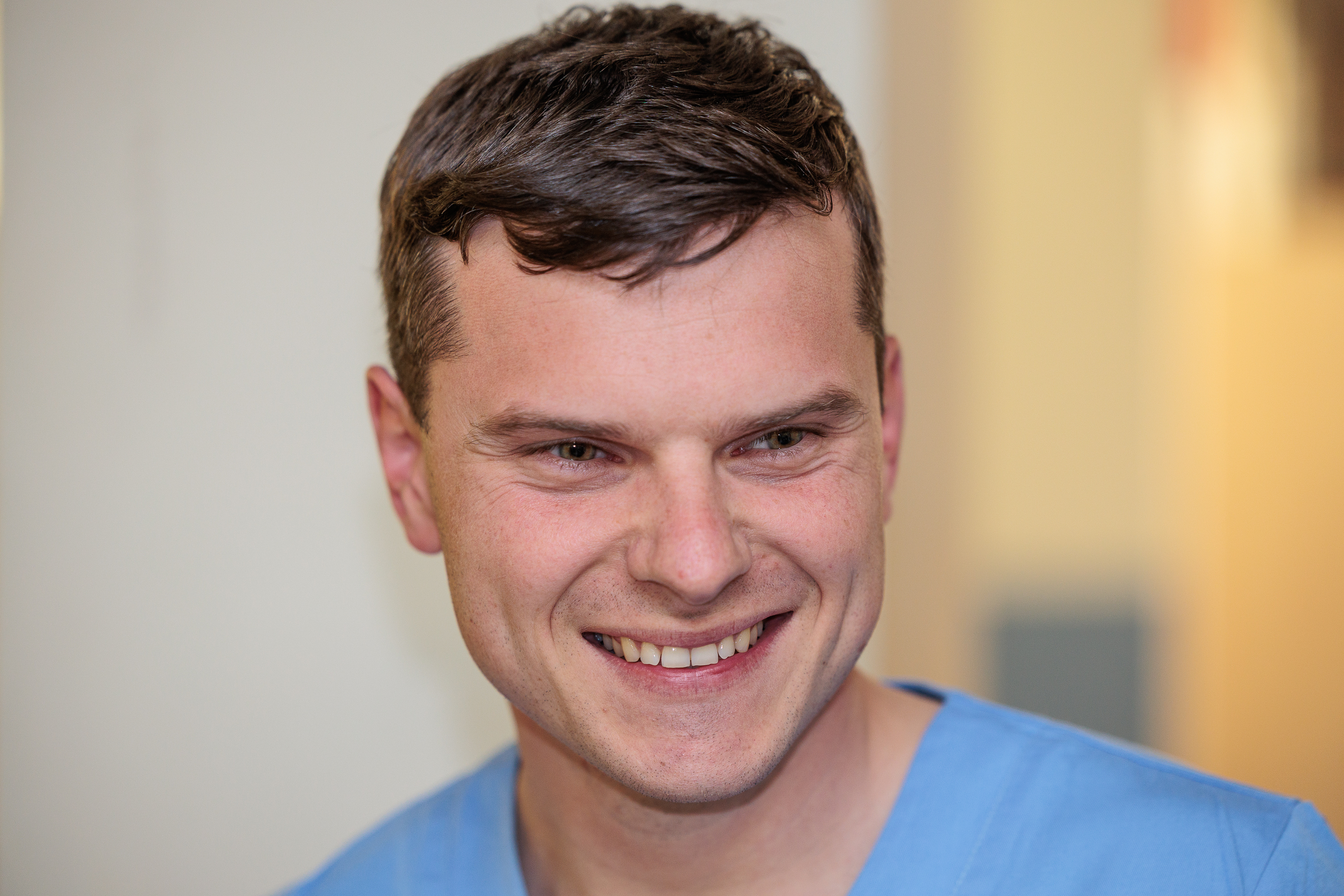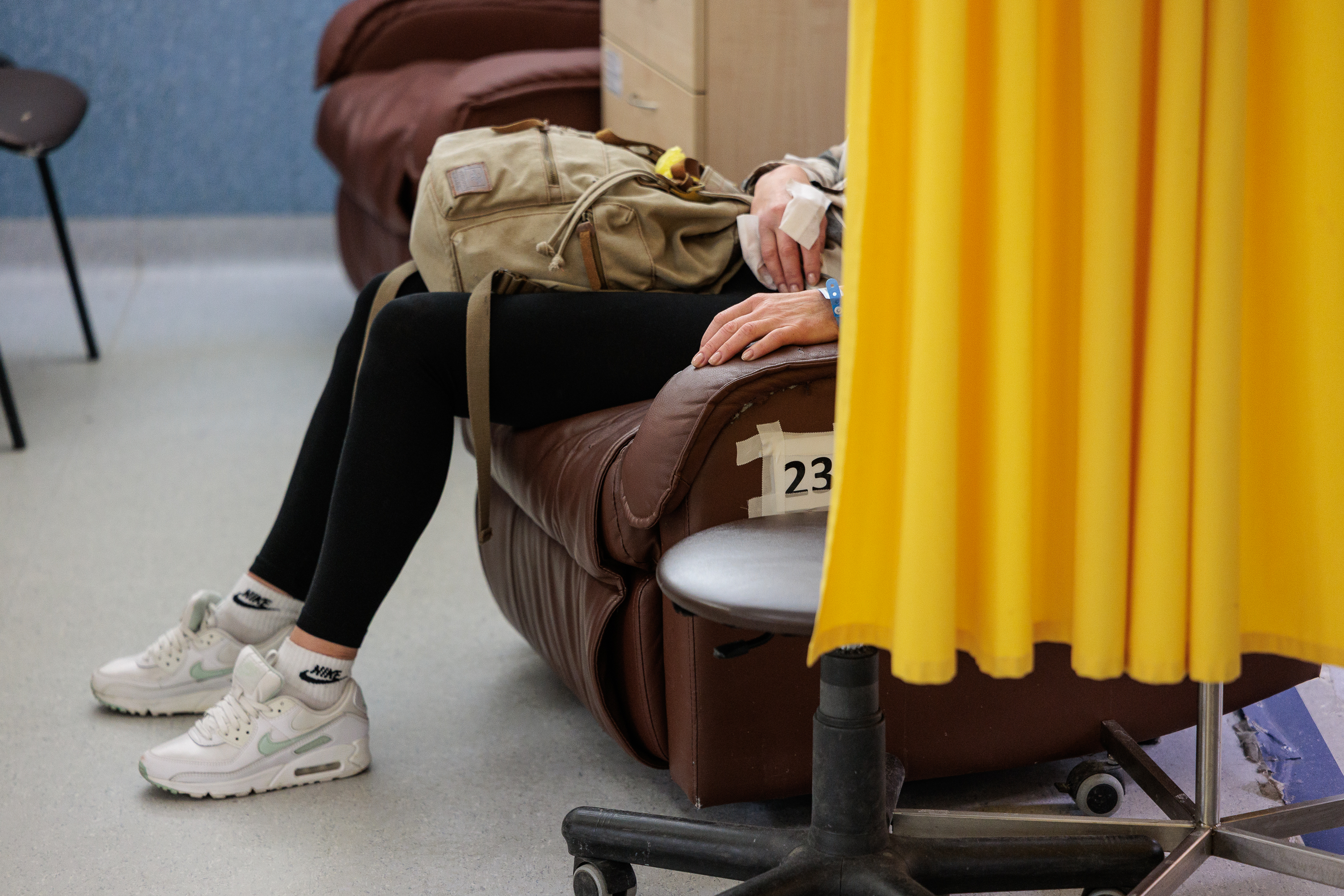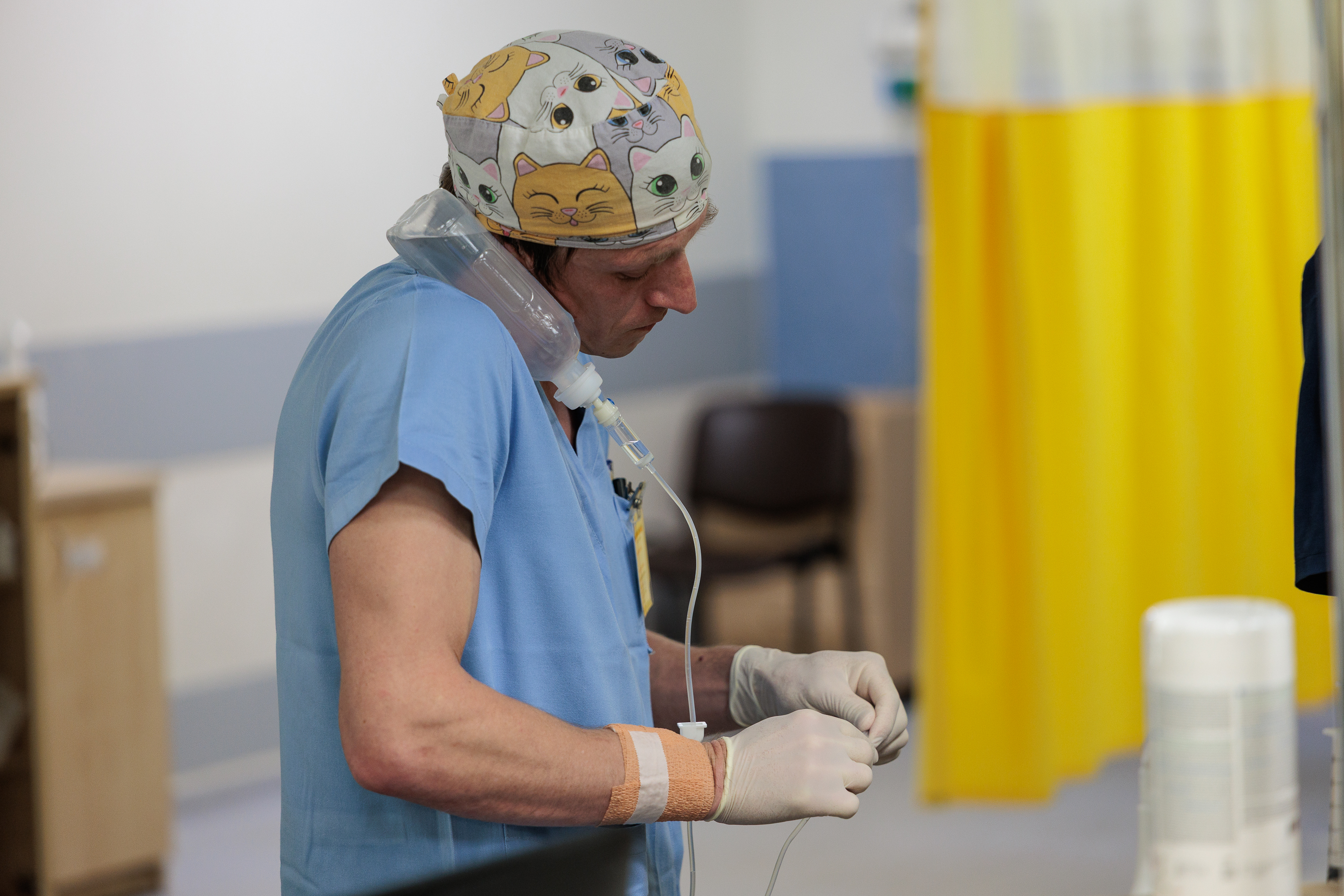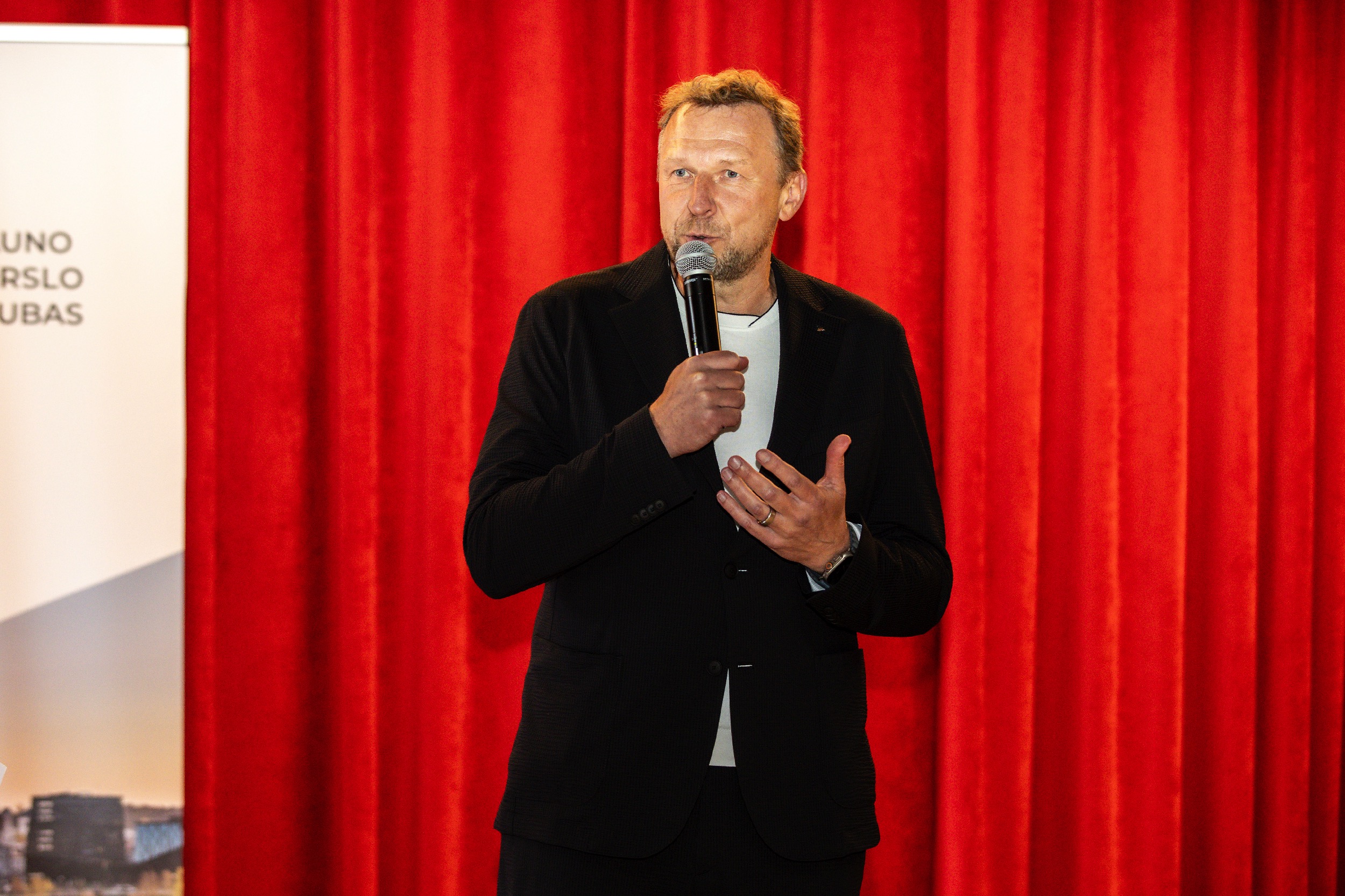patients are still able to surprise
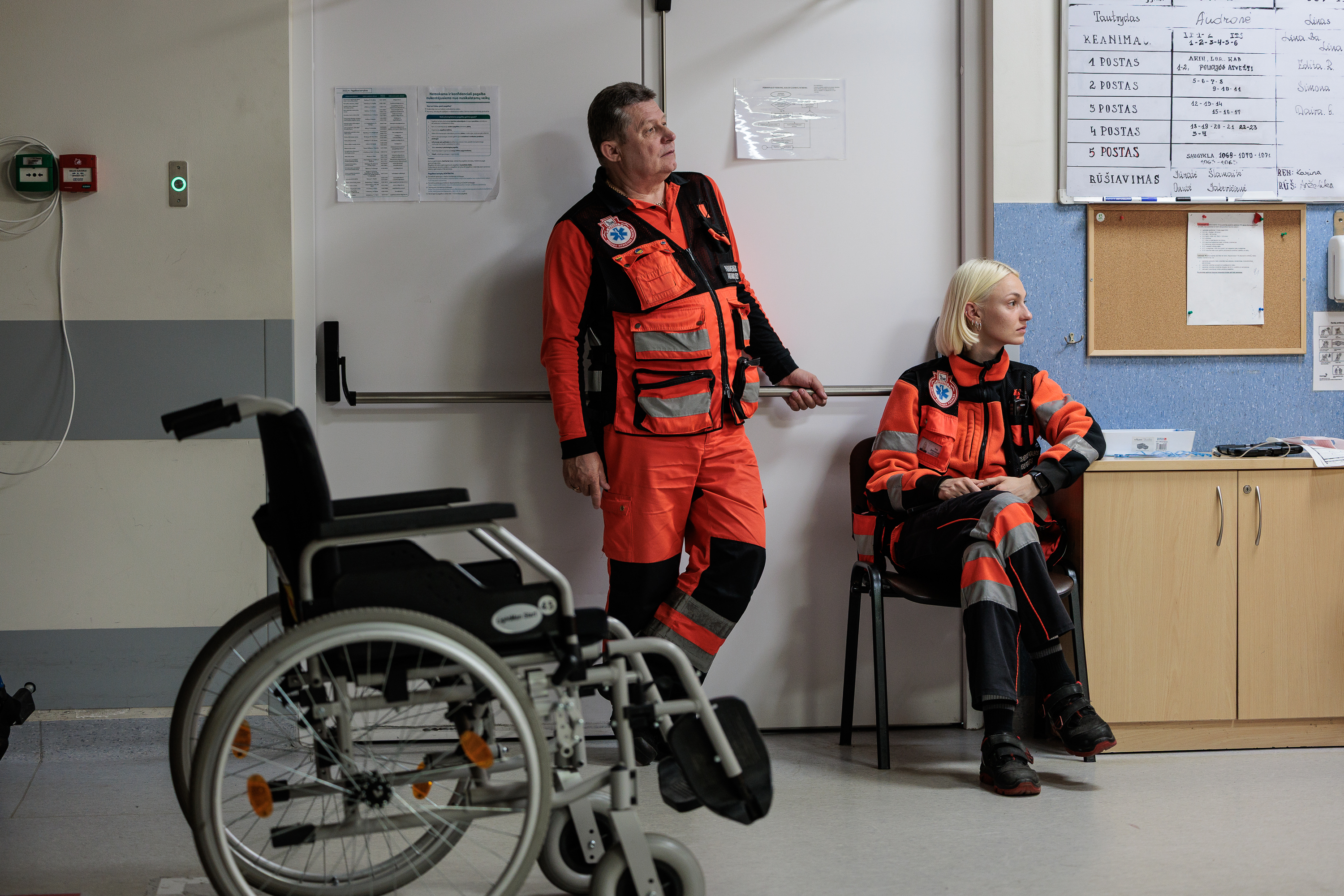
The traffic light is divided
While driving on the rebel Avenue, a frequent leg of Kaunas involved a very clicking accelerator at the turn to Eivenių Street.
« God forbid, you will get to the clinics – you spend all day, » says the rare realization that the time spent in a medical institution does not depend on the Supreme and, no matter how strange, not the medical profession. Founded in 2015, patients are classified in the first Lithuanian Emergency Medicine Clinic in the severity of the condition, so how quickly you get to the specialists, how long you will take in the waiting room and where you will travel further, depending on your condition.
« Priority is given to patients with the most severe, most sensitive time. I am talking about diseases such as stroke, severe injuries, » Linas Darginavičius, head of Kaunas Clinic Emergency Department, ambulance doctor, assured that the ambulance is a priority. It has happened when people came to help themselves after household conflicts with yawning stab wounds and, conversely, the gums called the paramedics to the home.
« Our goal is one – all those who come to the maximum to explore and release maximize. Not all conditions can be done equally, which is why patients spend more than four hours on average. So you can take one hour, you can take twelve hours and more, » according to L. Darginavičius. Further process is regulated by a traffic light principle. The most severe patients are marked in red. In contrast to yellow, which is in a more stable condition, they cannot wait. The lightest patients are marked with green. Their fate is often determined by the Reds – the more of them, the longer you may have to wait for their turn.
Specifications: The work of a doctor is hard but fun – you never know how the day will begin and end. / Photo by Edgar Cickiewicz
Everything in one place
« Now we are just in the area where the most severe patients fall, » the head of the emergency department stared at the intensive care hall. Connected to special equipment with sensors capturing various indicators, a patient suffered during a domestic conflict was lying in bed. Although, when he saw us, he raised his head and then his hands, the word failed.
« 3.65 per milliliter … – L. Darginavičius did not hide that drunken patients often occur and they are still able to surprise medical staff.
There are three intensive care halls. Two of them are for adults, the third finds children. All of them contain anesthesia, artificial pulmonary ventilation apparatus, cardiographs, defibrillators and other necessary hardware. Everything is installed so that the patient does not need to be transported far. The same principle was designed by the most modern injuries and emergency center in the Baltic States, which opened its doors in Kaunas clinics ten years ago. In the past, patients went to cardiology, eyes and other receptions, and now everything is in one place. On the ground floor of the building, the adult and children’s reception-emergency department is operating, the first floor is operating, intensive therapy, and the third floor is an orthopedic-traumology unit.
It is estimated that about 60 percent. Patients come to the emergency department themselves, others are brought by ambulances. Last year, 84,000 were registered. patients. 20-30 % They were hospitalized. Others are released, sent to other treatment facilities.
« We get about 250 people a day. Calculate how many of them are in a week, » the emergency medicine could not explain the paradox as to why patients’ flows are growing as the country’s population decreases.
Choice: The profession of L. Darginavičius’ emergency medical physician was fascinated by the variety and quickly visible. / Photo by Edgar Cickiewicz
Siege – in the evenings
Emergency Medicine Clinic – quite a few. During the construction, it seemed that the building would be even too large.
« Before you came, I saw that the sun was outside the window. There is a big compartment, a big building, » – the corridor, which was carefully fallen, stopped, L. Darginčius stopped where the lamps were constantly turned on.
At least two doctors, as many resident, up to five nurses and support staff, usually rotate in the observation department. Patients who are neither the most severe nor the mild condition fall here. Their pulse and blood pressure are good, they respond to the environment, but have complaints that need to be investigated and possibly prescribed by appropriate treatment.
« It can be a person who has broken his foot and he cannot sit. There may be many diseases of an old man who has come to the institution, say, pneumonia. It is likely that he will be hospitalized for longer treatment, » L. Darginavičius looked after the ward.
Our alcotesters measure up to 6 per milliliter. Everything, if more, is immeasurable.
That day, the department was empty, but usually more than 20 people are counted in beds and special sofas. This number is the most comfortable, but more than 30 can be accommodated if necessary. Before entering this section, patients visit one of the five cabinets near the reception. They provide the inspection service to those who arrive on their own.
« In terms of equipment, these cabinets are not special. There are fewer in the mornings and days, and in the evenings and at night, forces are strengthened as more patients always arrive.
« Most of the work is on Fridays and Mondays. In the first case, people think: everything, I can’t wait for the weekend. In the second: I waited all weekend, I can’t, » L. Darginavičius could not explain the activation, just guessed that he was coming in the evenings, others’ emergency department. It is better to have a lot or a dozen hours here than a week or month in a queue at the clinic.
Reality: Some patients travel unnecessarily to the reception. / Photo by Edgar Cickiewicz
An abundance of services
Another structural unit of the Emergency Medicine Clinic is the emergency diagnostic and short -term treatment department. He started his activities in September 2021.
« We have noticed that additional examination is sometimes needed because there is no clear exact boundary – whether more heart or lung disease. I could give more examples. Or just need some small but longer -lasting treatment methods. Then the idea that patients could be treated longer,
The mission of urgent diagnosis and short -term treatment is to deal with acute health disorders under the inpatient conditions where this is not performed within 24 hours in the emergency department and in the absence of indication patient immediately hospitalized into a specialized unit. Detailed examination and treatment here takes up to three days. The necessary tests are given to the treatment and followed by the patient to be discharged, monitored or hospitalized to the specialized Kaunas Clinic Unit, and may also be transported further to the secondary level medical treatment facility or returned to Kaunas Clinic Branch.
« Let’s go further, » L. Darginavičius entered the corridor, where diagnostic cabinets lined up side by side, leaving for himself. They are shared by both adults and children. Here, specialized services, such as ultrasound diagnosis, x -ray and so on, are provided here. On that afternoon, up to ten patients were waiting on the chairs, opening the door: a limp girl, a man with a tiny stinging abdomen, a woman of honorable age, a telephone -on -call temperature on the phone.
« Do we insulate patients who have fever? We did so through pandemia. Now, if a feverish person with cold symptoms are referred, please wear a face mask, but we are not distinguished from other patients, » the head of the emergency department pointed out that fever may be a symptom of other diseases.
Forces: The emergency department employs more than half a doctors and the number of residents is changing. / Photo by Edgar Cickiewicz
If the door spoke
We ended the walk after the emergency department where patients who came to Kaunas Clinics start our journey with ambulance. It’s a garage. Spacious, large, with a number of vehicles, with a roof to protect against rain, snow, wind. Patients are transported from the garage. If necessary, after shooting gas pistols, contact with certain chemicals, and in special rooms, patients are cleaned before medical examination.
« Obviously, this procedure is not performed if we have to save life. But if the condition allows, we must first clean, » says L. Darginavičius, there is a risk of contamination of the environment and other patients.
There are also special insulators for patients suspected of severe infection. They are imported directly from the field to special premises where they are explored separately from others. If suspicion of infection is confirmed, it is transported to the Infectious Disease Unit. Just a few steps there are rooms where the heat -hungry of the medical institutions from time to time is drunk, intoxicated or aggressive. The emergency department has protection, but sometimes police officers also have to be called.
« There is no routine in our work. When you think you’ve already seen everything, what surprises you, » L. Darginius, who was in a moving frame and broken metal door, made it clear that they also saw a lot.

